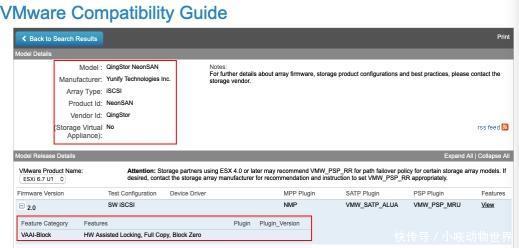Title: Hardware Fittings: An Essential Guide
This essential guide to hardware fittings provides a comprehensive overview of the different types and their applications. From simple fasteners to complex plumbing fixtures, each component plays a crucial role in the construction and maintenance of buildings. This guide explains the basic characteristics, installation procedures, and maintenance tips for each type of hardware fitting, ensuring you have the knowledge to select and use them correctly. Whether you are a professional builder or a DIY enthusiast, this guide is an essential tool for understanding hardware fittings.
Hardware fittings are essential components in various construction and manufacturing projects. These are the metal pieces that hold things together, often connecting two or more objects to form a rigid structure. Fittings are usually made from a range of materials such as steel, stainless steel, brass, and aluminum, each offering its own unique properties and benefits.

In this guide, we will explore the different types of hardware fittings commonly used in various applications. We will also discuss the important factors to consider when selecting these fittings for a specific project. By the end of this guide, you will have a good understanding of the role hardware fittings play in construction and manufacturing, as well as the knowledge to make informed decisions about the type and quality of fittings you need for your next project.
Types of Hardware Fittings
1、Nuts and Bolts: These are the most common hardware fittings used in construction and manufacturing. Nuts are hex-shaped pieces that mate with bolts to hold them in place. Bolts are threaded rods that can be inserted into holes drilled into the material being joined. Together, they provide a strong, reliable connection that can be easily disassembled for maintenance or replacement.
2、Screws: Screws are threaded fasteners that are driven into materials to create a mechanical joint. They are often used in applications where a strong, permanent connection is needed, such as attaching metal parts to wood or plastic surfaces. The type of screw used will depend on the material being joined and the desired level of strength and durability.
3、Washers: Washers are thin metal disks that are placed between nuts and bolts or screws and the material being joined. They distribute the load of the fitting over a larger area, reducing the risk of damage to the material being joined. Washers also help to prevent leakage by creating a tight seal between the fitting and the material being joined.
4、Brackets: Brackets are metal pieces that are used to support or attach objects to surfaces. They come in a variety of shapes and sizes, depending on the application they are being used for. Brackets are often used in construction to support beams, pipeswork, and other structural elements. In manufacturing, they may be used to attach machinery or equipment to factory floors or walls.
5、Hooks and Eyes: Hooks and eyes are hardware fittings that are used to suspend or support objects from above. Hooks have a curved shape that allows them to grab onto surfaces, while eyes have a hole through which a rope or chain can be passed to create a secure attachment point. These fittings are commonly used in construction, manufacturing, and transportation industries.

Factors to Consider When Selecting Hardware Fittings
1、Material: As mentioned earlier, hardware fittings are made from a range of materials including steel, stainless steel, brass, and aluminum. Each material offers its own unique properties and benefits. For example, steel is strong and durable but prone to rusting if not properly coated; stainless steel is resistant to corrosion but may not be as strong as steel; brass is an attractive metal that is resistant to corrosion but may be more expensive than other metals; aluminum is lightweight and resistant to corrosion but may not have the same strength as other metals. It is important to select a material that meets the requirements of your specific application.
2、Thread Type: The type of thread on a hardware fitting is important for ensuring a secure connection between two surfaces. Common thread types include standard threads, fine threads, and metric threads. The type of thread you need will depend on the material being joined and the desired level of strength and durability in the joint.
3、Size and Shape: The size and shape of a hardware fitting are important for determining its suitability for a particular application. For example, if you are attaching two pieces of wood together using screws, you will need to select screws that are long enough to penetrate both pieces of wood but not so long that they damage the surrounding material or create an unsafe condition in your application (e.g., by protruding through walls or floors). Additionally, some shapes may be better suited for certain applications than others; for example, using square-headed bolts instead of round-headed bolts may provide more stability in certain situations where there is risk of rotation within the joint being formed by the fitting itself (e.g., in applications involving sheet metal).
4、Load Capacity: The load capacity of a hardware fitting refers to its ability to withstand the weight or force applied to it without breaking or bending under load conditions encountered during normal use of your product or structure being built/maintained by skilled tradesmen like plumbers or electricians who understand how these components work together within systems like plumbing pipeswork or electrical wiring runs respectively). Knowing this information ahead of time can help you avoid situations where excessive loads cause premature failure or damage to your project components due to incorrect sizing/selection decisions made during initial design phase prior construction/manufacturing process taking place over time according schedule requirements set forth by client contracts signed prior commencement work performed on site by skilled
Articles related to the knowledge points of this article:
Wenzhou Hardware Accessories: The Heart of Machinery
Title: New Price Quote for Imported Hardware Components in Ninghe District
Title: Understanding the Quality and Versatility of Hardware Components in Changzhou, China
Maintenance of Hardware Accessories



